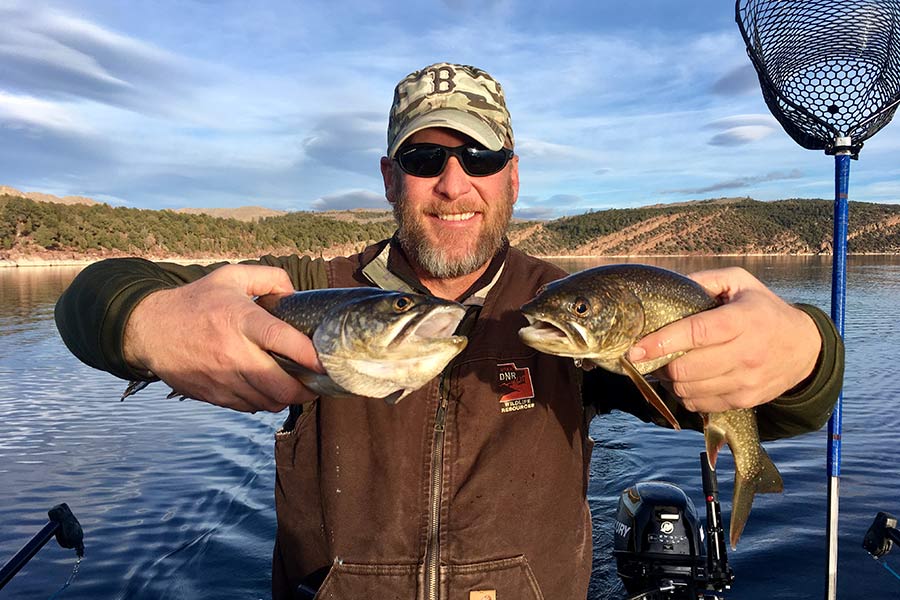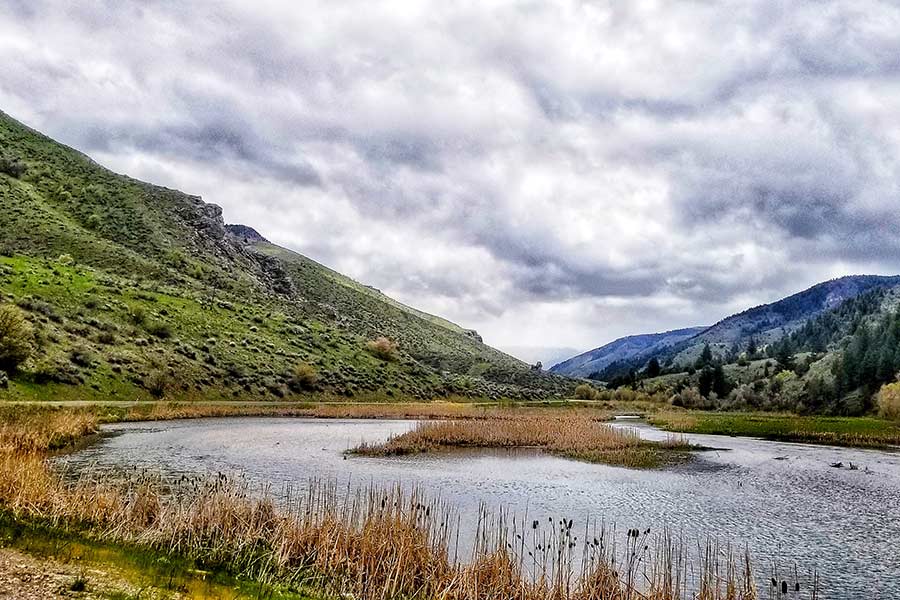DWR requests anglers harvest specific fish species at 4 waterbodies to help improve fisheries
Salt Lake City — With summer winding down and cooler temperatures on the horizon, some anglers may be gearing up for fall fishing in Utah. If you are planning to fish at four specific waterbodies in the state, the Utah Division of Wildlife Resources is requesting the harvest of specific fish species that are negatively impacting the fishery at each waterbody.
When certain fish species become too numerous in a waterbody, they can reduce the overall food supply for all the fish and can also impact other species (like if the fish are piscivorous and prey on other fish). When this happens, it can cause the fish in the waterbody to grow slower and remain smaller.
"Historically, anglers used to harvest more fish, which would help keep fish numbers lower and ensure that the food supply for the fish at any given waterbody was shared with a smaller number of individual fish," DWR Sportfish Coordinator Trina Hedrick said. "But now more anglers prefer to participate in catch-and-release fishing, which leaves more fish in the system and increases competition for limited resources. Each lake or reservoir has a maximum number of fish it can sustain. When the waterbody exceeds that, you'll eventually see an overabundance of skinny, smaller fish."
There are a few waterbodies in Utah where this is happening, so the DWR is asking anglers to harvest specific fish species that they catch in the following areas:
Small lake trout at Flaming Gorge Reservoir
The DWR is requesting that anglers catch and keep small lake trout — under 25 inches — at Flaming Gorge Reservoir. Currently, the popular reservoir in northeastern Utah — known for producing some of the largest lake trout in the U.S. — has too many small lake trout in it. In Flaming Gorge, lake trout larger than 25 inches primarily consume kokanee salmon and rainbow trout. If the abundant population of smaller lake trout (under 25 inches) is not reduced, there could be impacts on the salmon and rainbow trout populations, as well as fewer fish to feed the trophy lake trout.
Fishing can be good for lake trout this time of year. Anglers should target them in deep areas (50–100 feet) along main channel points and walls. For anyone trolling, lures like a dodger and squid will work, as well as spoons and crankbaits about 3 inches in size. For those who like to vertically jig, tubes tipped with sucker or chub meat will work, as well as jigging spoons and blade baits in ⅜-ounce weight. The color of lure can vary, but white, chartreuse and even pink will work, depending on the day.
"We are requesting that all anglers harvest a limit if they can because lake trout are delicious and great to eat, and the angler would also be helping out the fishery at the same time," Hedrick said.
Walleye at Starvation Reservoir
This time of year offers some of the best walleye fishing at Starvation Reservoir. Flicker shad and bottom bouncers are the best lures to target walleye. You will find the fish at depths of around 15–20 feet.
Bluegill at Pelican Lake
Worms or small-sized jigs with plastic baits can be very effective for catching bluegill. You will find these fish along the open shorelines or in front of the weed lines of the lake. Bluegill tend to move from the shore to deeper water as the day gets warmer.
Visit the DWR website to learn about some of the ongoing efforts to improve the fishery at Pelican Lake.
Brown trout at Blacksmith Fork River
The average length of brown trout currently found in the Blacksmith Fork River is around 11 inches, but they are becoming more abundant, which means their growth will begin to be stunted as food sources decrease.
"We really need people to harvest more brown trout here, but few anglers actually do so, despite the four fish bonus limit," Hedrick said.
Spinners are the most effective way to cover water and catch a lot of fish on this river. Fly fishing can also be productive here, but anglers will need to experiment to find effective patterns for the specific time of year. Pheasant tail, hare's ear, hoppers and terrestrial fly patterns typically work well.


















